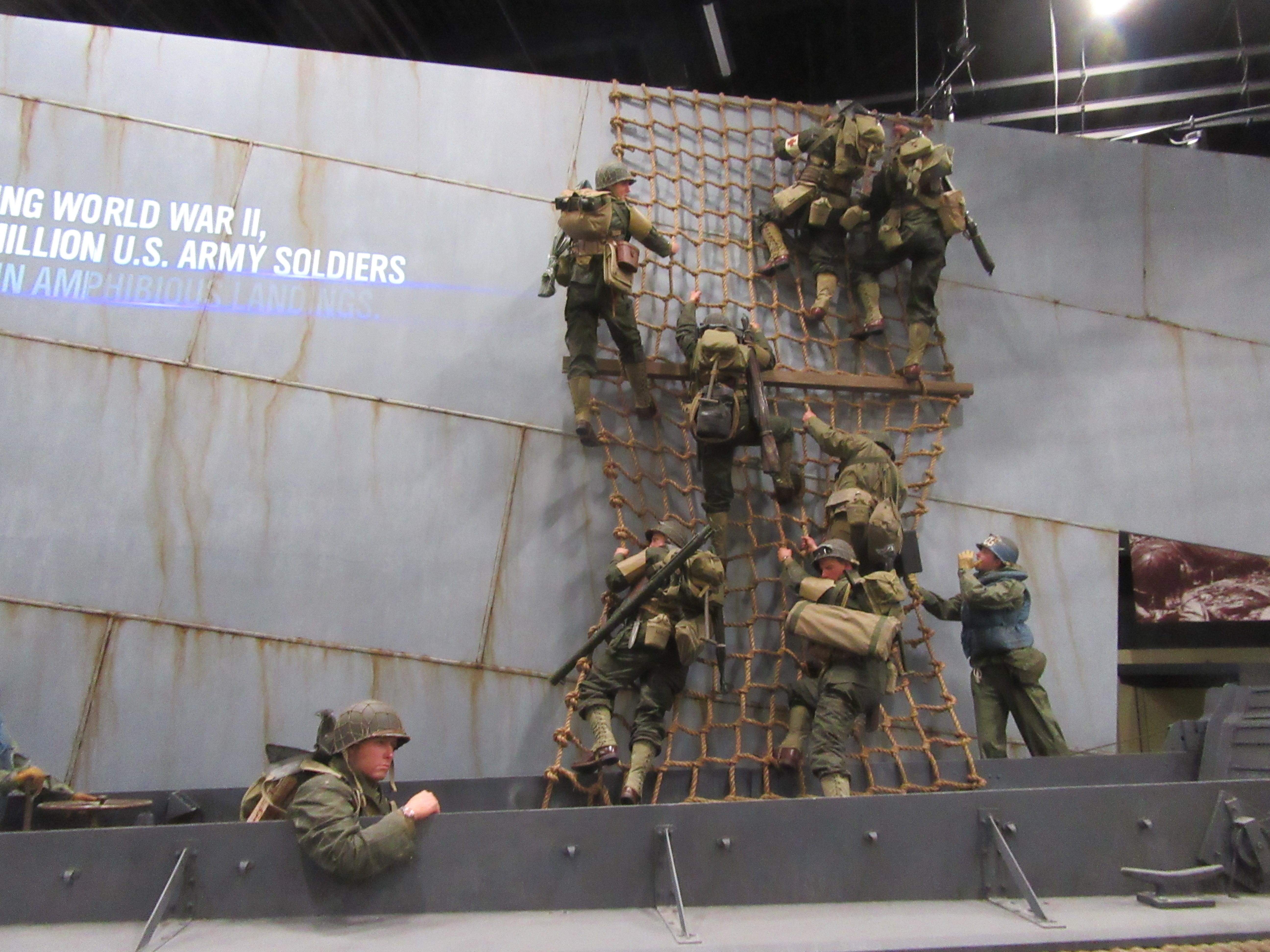Wednesday, March 27, 2024
If you ever fantasized about parachuting out of an airplane, check out the new D-Day exhibit at the National Museum of the U.S. Army at Fort Belvoir. But if you successfully land, you’ll be in a Nazi-occupied country on D-Day in the heat of World War II.
To honor those who participated in the invasion of German-occupied France on June 6, 1944, when the multi-nation Allied Expeditionary Forces landed on Normandy, France’s beaches, the museum will stage a D-Day exhibit and host many educational programs from April 6 to mid-November.
D-Day, code-named Operation Overlord, was one of the most complex land, sea and air operations ever at that time, the largest amphibious invasion in military history.
Historian David Ambrose wrote in his book, D-Day, “In one night and day, 175,000 fighting men and their equipment, including 50,000 vehicles of all types, ranging from motorcycles to tanks and armored bulldozers were transported across 60 to 100 miles of open water and landed on a hostile shore against intense opposition. They were either carried by or supported by 5,333 ships and crafts of all types and almost 11,000 airplanes … It was as if the cities of Green Bay, Racine, and Kenosha Wisconsin, were picked up and moved – every man, woman, and child, every automobile and truck – to the east side of Lake Michigan in one night.”
 American soldiers coming off a ship and onto a Higgins boat, a World War II landing craft. (Part of the permanent collection.)
American soldiers coming off a ship and onto a Higgins boat, a World War II landing craft. (Part of the permanent collection.)
Led by General Dwight D. Eisenhower, the Supreme Allied Commander, the military alliance had meticulously planned the unprecedented invasion. The troops crossed the English channel, secured Normandy’s beaches and went on to liberate Paris. Many credit the historic battle with turning the tide against the Nazis, leading to the defeat of the Axis Powers led by German chancellor Adolph Hitler.
For the war, the United States had grown the U.S. Army from 170,000 men in 1940 to 7.2 million by 1944. U.S. factories had doubled their capacity between 1939 and 1944, manufacturing airplanes, boats, ships, tanks and weapons, Ambrose wrote.
Museum Events
At an exhibit titled “D-Day: Freedom from Above,” visitors can make airborne landings behind enemy lines through interactive “HistoPad” technology, virtual simulations, and through the true stories of U.S. Army paratroopers who were loaded with gear. Their backpacks typically carried, for example, a bazooka, a knife, an automatic rifle or a machine gun, grenades, a medical kit and radio equipment.
The invasion and future World War II battles involved 13,000 paratroopers and 4,000 glider infantry men. The paratroopers jumped from airplanes behind enemy lines just after midnight. Their mission was to prepare for the invasion force that would arrive at dawn. Throughout the war, the paratroopers captured roads, created river crossings, blew up bridges, destroyed communications and cut off supplies and reinforcements.
Museum-goers will learn the stories of individual soldiers’ landings and actions on the ground after they landed, including efforts of French villagers who provided food and medical aid to the paratroopers.
The museum will also display four medals of honor awarded to soldiers for actions performed on D-Day, medals never before displayed together.
The museum’s Global War Gallery has permanent exhibits including World War II artifacts like a parachutist’s steel helmet, an M4 Sherman Cobra King tank, a landing craft called a Higgins Boat, a soldier’s pocket Bible and the story of the development of the atomic bomb.
At an April 5 symposium, (with some virtual seats available on March 26) Mitchell A. Yockelson, a former U.S. Naval Academy professor, will describe the paratroopers’ airborne operations, from leaping from airplanes to landing.
At the April 5 all-day, free, public symposium, held both in-person and virtually, historians and military experts will discuss the invasion’s planning, execution and significance.
Register here: https://www.thenmusa.org/2024-dday-symposium/.
The opening weekend will also feature an equipment and parachute- packing demonstration by U.S. Army Aerial Delivery Unit soldiers. In the next few months, the museum will have documentary screenings, hands-on demonstrations, author presentations and history talks. Topics include the WASPs of World War II, tactical intelligence for D-Day and the African American Experience in the war.
Information: www.thenmusa.org/dday80/